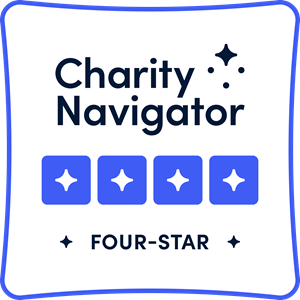Finding the Rainbow in the Storm
Four principles to guide your giving through this pandemic
Last month while sheltering in place, I looked out our window with my children to watch the rain wash through our neighborhood. After two brief, hard squalls, the sun came out and suddenly we saw a huge, vibrant rainbow. It wasn’t just any rainbow; it took up the whole sky. My kids just stared, marveling at its beauty.
Rainbows are a sign of promise. As the COVID-19 news from Italy became worse, and there were increasing restrictions on movement, rainbows began to pop up in windows throughout affected areas. The pictures were mostly drawn by children and often included the words, “Andrà tutto bene” (everything will be all right), the Italian translation of a similar phrase used in China during their lockdown. These rainbows created community, inspired hope, and expressed a shared belief that better days would come.
Rainbows are also a powerful symbol in Judaism. The first rainbow in the Torah comes at the end of the story of Noah. The rainbow appears as a sign of the covenant built between God and the people that God will never again destroy the world. In fact, one says the following blessing when seeing a rainbow: “Blessed is God who remembers the covenant, is faithful to the covenant and remembers God’s people.”
We are certainly in a stormy time. We are all wondering how we can help, how we can make a difference when it is hard to know what tomorrow will bring. How can we, as donors, help to weather this storm, to see the promise of the rainbow, and see our lives on the other side?
1. Think of this as “the rainy day.”
For those of you who have been able to contribute to your donor-advised funds, this may be the rainy day you have been waiting for. Now is a time when your grants can do so much good. We encourage you to make as many grants as you can. You have already set this money aside to do good, so make this the year you set an audacious goal for giving.
2. Envision the world you want to see when this storm passes.
Imagine what you want the world to look like. What organizations are crucial to you? What can you do to help them survive this crisis? Every organization is worried about making their fundraising goal this year, keeping their staff employed, health insurance, and making rent. This crisis affects them all. Make decisions about gifts as soon as you can; it helps organizations immeasurably and may even help them survive. If you were going to spread out grants from now until December, give them now.
3. Figure out what resonates with your sense of purpose.
Determine how you would like to respond to the crisis with immediate giving. There are needs in many sectors: local service needs (food, shelter, health care, mental health for caregivers or the isolated); COVID-19 health-related needs (hospitals, research, supplies); international aid (agencies preparing for the spread of COVID-19 into dense, underserved regions, refugee camps). Sit down with your spouse, your family, Zoom a friend and chat, or call your philanthropy advisor. We would love to help you find the lever you can push.
4. Determine your philanthropic “covenant” or commitment that shifts your approach to giving.
How is your giving going to change? Perhaps you will give less restricted gifts and give in a way that allows organizations to use your funding wherever the need is greatest. This might be the time to consider recurring gifts rather than a single grant. You could also contact organizations that you are very close to in order to understand what their additional needs might be during this time and how you can help. Ask what they need and commit to spreading the message to others in your circle.
This is certainly a time of difficult, unchartered challenges. However, the philanthropic commitment that you’ve made over the years can help smooth the waters. Our collective history shows resilience and determination, and we know that together we will persevere. Let us know how we can help.
Debbie Berkowitz is a Senior Philanthropy Advisor at the Federation.
Learn more about Federation Philanthropy Partners.


